Disclosure: This article contains affiliate links. We may earn a commission from purchases at no extra cost to you, which helps our travel content.
The cobblestone streets of Old Montreal have witnessed over three centuries of history, yet most visitors barely scratch the surface of this historic district's rich past. Having spent years documenting remote cultures across the northern reaches of our continent, I've developed a particular appreciation for the layered histories that often hide in plain sight. During my recent summer visit to Montreal—a welcome change from my usual tundra expeditions—I was struck by how many significant historical sites remain overlooked by standard tourist itineraries. These hidden gems offer couples a more intimate connection with Montreal's complex colonial past, indigenous heritage, and architectural evolution. Whether you're history enthusiasts or simply looking for a more authentic experience of this remarkable Canadian city, these ten sites will transport you through time while avoiding the crowds that cluster around better-known attractions.
Beyond Notre-Dame: Sacred Spaces with Stories to Tell
While tourists queue for Notre-Dame Basilica (rightfully so, it's magnificent), several equally compelling sacred spaces sit quietly nearby, their histories whispering to those who listen.
The Chapelle Notre-Dame-de-Bon-Secours (Our Lady of Good Help) may lack the grandeur of its famous counterpart, but its significance runs deeper. Built in 1771 over the ruins of an earlier chapel founded by Marguerite Bourgeoys in 1655, this modest stone church earned the nickname 'The Sailors' Church' as generations of mariners came to pray for safe passage on the St. Lawrence. The small museum beneath contains remarkable archaeological remains from Montreal's earliest European settlement, including foundations dating to the 1670s.
Just blocks away stands St. Andrew's Presbyterian Church, an architectural gem that represents the Scottish influence on Montreal's development. Its distinctive Gothic Revival style with a Greek portico creates a unique architectural fusion that reflects Montreal's cultural blending. The church's cemetery contains graves of prominent Scottish merchants who shaped the city's commercial development.
Perhaps most overlooked is the Old Saint-Georges Anglican Church on Rue Saint-Joseph. Now repurposed as office space, careful observers can still spot the ecclesiastical elements in its façade. This church once served Montreal's English Protestant elite during the height of British colonial influence in the 19th century.

💡 Pro Tips
- Visit the Marguerite Bourgeoys Museum inside Chapelle Notre-Dame-de-Bon-Secours for archaeological exhibits that bring early Montreal to life
- Attend one of the occasional chamber music concerts at St. Andrew's for an atmospheric cultural experience
- The best light for photography at these sites is early morning when the golden light illuminates their façades without harsh shadows
Forgotten Fortifications: Traces of Montreal's Military Past
Few visitors realize that Old Montreal was once a walled city, its perimeter defined by stone fortifications that protected the settlement from the 1720s until their demolition in the early 19th century. While the main walls are long gone, fascinating remnants persist for the observant traveler.
The Champ de Mars public space, located behind City Hall, reveals the most substantial remaining section of Montreal's original fortifications. Archaeological excavations in the 1990s uncovered the stone foundations of the city's northern wall and two of its bastions. The city wisely preserved these findings under glass panels, allowing visitors to literally walk above history. I spent a quiet afternoon here sketching the outlines of these defensive works, imagining the city as it existed three centuries ago.
Nearby, the Customs House on Rue de la Commune incorporates stones from the original fortifications into its foundation—a literal example of building upon history. This elegant Beaux-Arts structure from 1915 replaced an earlier customs house and serves as a reminder of Montreal's importance as a trading port.
For a comprehensive understanding of Montreal's military past, I recommend packing a reliable field guide in your daypack. Having specific historical context enhances the experience tremendously when examining these subtle historical traces.

💡 Pro Tips
- Visit Champ de Mars in late afternoon when the sunlight highlights the texture of the excavated fortification stones
- Look for the informational plaques that show maps of the original walled city superimposed on the modern street grid
- The nearby Château Ramezay museum has excellent models showing the evolution of Montreal's defenses
Merchant Mansions: The Forgotten Elite of Old Montreal
Beyond the well-trafficked main streets of Old Montreal lie several remarkable mansions that tell the story of the merchant class that once controlled the fur trade and later the city's banking and shipping industries.
The Papineau House on Rue Bonsecours stands as one of Montreal's finest examples of early 19th-century residential architecture. Built in 1785 for Joseph Papineau and later home to his son Louis-Joseph (a key political figure in Lower Canada's history), this elegant stone house offers guided tours that reveal the domestic life of Montreal's French-speaking elite. The period furnishings and family artifacts provide an intimate connection to the past that large museums often lack.
Less known but equally fascinating is the George-Étienne Cartier National Historic Site on Rue Notre-Dame. This pair of connected townhouses showcases the lifestyle of the Montreal bourgeoisie during the Victorian era. Cartier, a Father of Canadian Confederation, lived here from 1848 to 1871. The immersive exhibits recreate the atmosphere of upper-middle-class life with remarkable attention to detail.
For couples interested in architectural history, I suggest bringing a good camera to capture the intricate details of these historic homes. The lighting can be challenging in these old buildings, but a quality compact camera with good low-light performance will help you document these architectural treasures without disturbing other visitors.
My personal favorite is the often-overlooked Maison Malard on Rue Saint-Paul, one of the oldest residential buildings in Montreal (circa 1715). While not open for interior tours, its distinctive gambrel roof and thick stone walls exemplify the French colonial architectural style that defined early Montreal. The adjacent courtyard offers a peaceful spot for reflection away from tourist crowds.

💡 Pro Tips
- Book the guided tour of Papineau House in advance as group sizes are limited
- Visit the George-Étienne Cartier site on Thursdays when they often offer extended evening hours
- Look for architectural details that reveal the French and British influences that shaped Montreal's distinctive building styles
Industrial Heritage: The Forgotten Engine of Montreal's Growth
While Old Montreal is celebrated for its colonial architecture, its role as an industrial powerhouse is often overlooked. The area along the Lachine Canal and the Old Port contains remarkable industrial archaeology that tells the story of Montreal's economic development.
The Darling Foundry on Rue Ottawa represents the industrial heritage that once defined this neighborhood. Built in 1918 as an iron foundry, it manufactured machinery parts until the 1960s. Today, it's been thoughtfully repurposed as a contemporary arts center while preserving its industrial character. The massive interior space with its original crane system offers a visceral connection to Montreal's manufacturing past.
Nearby, the Silo No. 5 grain elevator complex dominates the waterfront landscape. While not open for regular tours, this massive concrete structure (built in stages between 1903 and 1958) stands as a monument to Montreal's role as one of North America's most important grain shipping ports. The complex stretches nearly half a kilometer along the Lachine Canal and offers photographers exceptional opportunities to capture industrial architecture at its most monumental.
For those interested in industrial history, I recommend walking the Lachine Canal National Historic Site, which features interpretive displays explaining how this 14.5-kilometer canal (completed in 1825) allowed ships to bypass the treacherous Lachine Rapids and facilitated Montreal's industrial boom. The restored locks and industrial buildings along the canal's edge provide a fascinating counterpoint to Old Montreal's more celebrated colonial architecture.
During my exploration of these industrial sites, I relied heavily on my waterproof hiking boots which proved invaluable when navigating the sometimes muddy canal paths and industrial areas. The ankle support and waterproof protection made a significant difference in comfort during long days of urban exploration.

💡 Pro Tips
- Check the Darling Foundry's exhibition schedule in advance as opening hours vary based on current installations
- For the best views of Silo No. 5, walk along the Pointe-du-Moulin park at different times of day to see how the light changes its massive concrete façade
- Bring binoculars to spot the remaining industrial equipment and machinery details on buildings along the canal
Indigenous Presence: The First Layers of Montreal's History
Long before European colonization, the island of Montreal was home to indigenous peoples whose history is too often overshadowed in tourist narratives. Several sites in and around Old Montreal acknowledge this deeper history and the continued indigenous presence in the city.
The area now called Place Royale holds particular significance as the precise location where Samuel de Champlain established a temporary fur trading post in 1611. Archaeological excavations revealed evidence of both French colonial and prior indigenous occupation. The Pointe-à-Callière Museum built above this site incorporates these archaeological remains into its exhibitions, allowing visitors to literally descend through layers of Montreal's history to its pre-colonial foundations.
Less known is the small Place de la Grande-Paix de Montréal, a modest square commemorating the 1701 Great Peace of Montreal treaty signed between the French and 40 First Nations. This diplomatic achievement ended a century of conflict and reshaped the geopolitical landscape of northeastern North America. The square features an easily missed stone marker with inscriptions explaining the treaty's significance.
For those seeking to understand Montreal's indigenous connections more deeply, I recommend visiting the Kanien'kehá:ka Onkwawén:na Raotitióhkwa Language and Cultural Center in Kahnawake, just a short drive from Old Montreal. Though technically outside the old city, this cultural center offers essential context for understanding the Mohawk presence that predates European settlement.
During my explorations of these sites, I found my field journal indispensable for recording observations and reflections. There's something about physically writing notes that helps me process and remember historical information better than digital alternatives, especially when trying to connect different historical narratives across sites.

💡 Pro Tips
- Visit Pointe-à-Callière Museum early in your trip as it provides essential context for understanding Montreal's layered history
- Look for indigenous place names throughout the city that hint at the pre-colonial geography
- Consider taking a guided indigenous walking tour for perspectives rarely included in conventional historical narratives
Hidden Courtyards: Intimate Spaces with Stories to Tell
Some of Old Montreal's most enchanting historical spaces are hidden within interior courtyards, accessible through narrow passages that many visitors walk past without noticing. These intimate spaces offer couples a quiet retreat from tourist crowds while revealing another dimension of the district's architectural heritage.
The Cours Le Royer complex represents one of Old Montreal's most successful adaptive reuse projects. Originally constructed as warehouses for the fur trade in the mid-19th century, these buildings now enclose a series of connected courtyards surrounded by residences and boutique businesses. The central courtyard features a small fountain and benches where you can sit quietly surrounded by history. I spent a peaceful afternoon here sketching the architectural details and watching light play across the weathered stone.
Nearby, the courtyard of the Hôtel Pierre du Calvet dates to the 1770s and represents one of the finest examples of Montreal's early stone architecture. While the building functions as a boutique hotel, respectful visitors can enter the courtyard to admire its period features. The adjacent restaurant makes this a perfect spot for a romantic lunch surrounded by history.
Perhaps my favorite hidden space is the courtyard of Château Ramezay, which features a meticulously maintained French colonial garden based on 18th-century designs. The geometric layout, medicinal and culinary herb collections, and period-appropriate plantings offer insight into the horticultural practices of New France. It's a perfect spot for quiet conversation away from the bustle of nearby tourist areas.
For couples exploring these intimate spaces, I recommend bringing along a good travel thermos filled with coffee or tea. Montreal's weather can be unpredictable even in summer, and having a warm beverage makes these peaceful courtyard moments even more enjoyable, especially during morning or evening hours when temperatures can drop.

💡 Pro Tips
- Visit courtyards during weekday mornings when they're least crowded
- Look for the subtle passageways between Rue Saint-Paul and Rue Notre-Dame that lead to hidden courtyards not marked on tourist maps
- Respect that some courtyards are semi-private spaces for residents; keep conversations quiet and don't intrude on residential areas
Final Thoughts
Old Montreal reveals its deepest secrets to those willing to step away from the well-worn tourist paths and engage with its layered history. These ten overlooked sites offer couples not just a glimpse into the past, but an opportunity to connect with the authentic character of this remarkable district. From sacred spaces and forgotten fortifications to merchant mansions and hidden courtyards, each site adds another dimension to your understanding of Montreal's evolution from indigenous settlement to colonial outpost to industrial powerhouse. As someone who has documented remote cultures across the northern reaches of our continent, I've found that urban exploration can be equally rewarding when approached with curiosity and respect for the stories embedded in stone and soil. I encourage you to allow yourselves the luxury of slow travel in Old Montreal—linger in courtyards, examine architectural details, and imagine the countless lives that have unfolded along these cobblestone streets across three centuries of continuous habitation.
✨ Key Takeaways
- The most rewarding historical sites in Old Montreal are often those overlooked by standard tourist itineraries
- Montreal's history is best understood as a series of layers, from indigenous settlement through French and British colonial periods to industrial development
- Hidden courtyards and repurposed industrial spaces offer intimate connections to the city's past while providing peaceful retreats from tourist crowds
📋 Practical Information
Best Time to Visit
Late May through September, with June and September offering pleasant temperatures with fewer crowds than July-August peak season
Budget Estimate
$150-250 per day for a couple (accommodations, meals, and museum admissions)
Recommended Duration
2-3 days minimum to explore these hidden sites properly
Difficulty Level
Easy - Mostly Flat Terrain With Cobblestone Streets Requiring Comfortable Walking Shoes

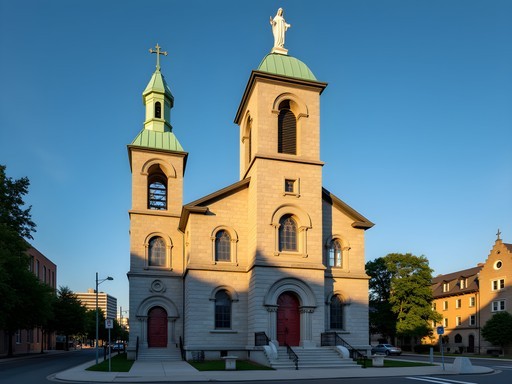







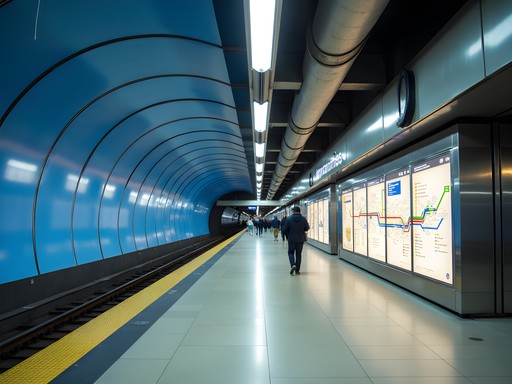

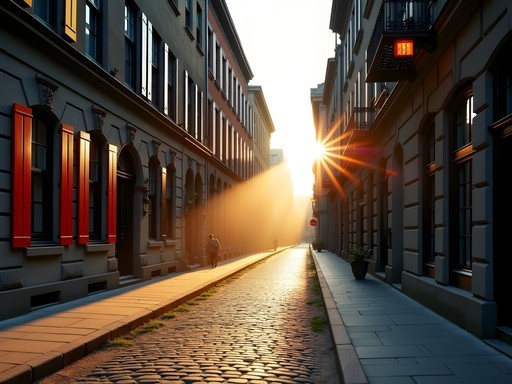
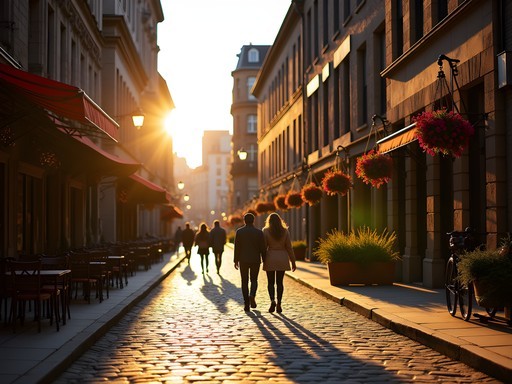
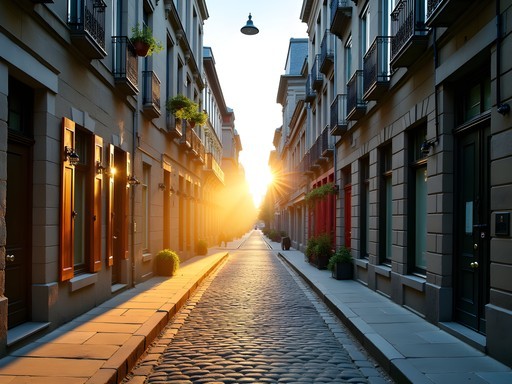



Comments
happystar
Those photos of the merchant mansions are STUNNING! 😍 Did you use any special equipment to capture the interior details?
Claire Hawkins
We visited Montreal with our kids (9 and 11) last summer and followed this exact itinerary! The forgotten fortifications were a huge hit with my history-obsessed son. We also discovered a small archaeological site near Pointe-à-Callière museum that wasn't mentioned here but fits perfectly with this theme. The kids loved seeing the actual excavation work happening. I'd recommend taking one of the walking tours offered by local history students - they added so much context to what we were seeing and kept the stories engaging for the children. We used this guidebook to help plan our route through Old Montreal.
luckydiver
We stumbled upon the old Grey Nuns' Hospital last year completely by accident. There was a small exhibition about medical practices in colonial Montreal that was fascinating. The guide mentioned it was only temporary though - does anyone know if it's still there?
smartace
Was there last month, exhibition is gone but they have a new one about urban development. Worth checking out!
waveway
Which of these sites would you recommend for someone with only half a day in Old Montreal?
Timothy Robertson
If you're short on time, I'd prioritize the Merchant Mansions and the remnants of the old fortifications near Place Jacques-Cartier. They're within walking distance of each other and give you a good sense of the city's evolution.
waveway
Thanks Tim! Will definitely check those out on my trip next month.
photomood
Love these hidden gems! Old Montreal has so much more than just Notre-Dame.
luckybackpacker
Is it possible to see all these sites in one day? Or should I spread them out?
islandnomad
Not Timothy, but I tried seeing them all in one day last month and it was WAY too rushed. Split into at least 2 days if you can!
Douglas Bradley
As someone who's written about Montreal's architectural history, I appreciate your focus on the forgotten fortifications. The remnants of the old city walls are fascinating examples of how military engineering shaped urban development. I'd add that visitors should also check out the archaeological digs near Place Royale which reveal even earlier layers of the city's history. I spent three hours there last year and the staff archaeologists were incredibly knowledgeable. Timothy, did you find any particularly surprising military artifacts during your research?
Timothy Robertson
Douglas, great point about Place Royale! The most surprising find for me was actually the old munitions storage beneath Champ de Mars that isn't mentioned in most guidebooks. The city occasionally opens it for special tours.
hikingway
Cool list! Saved for my trip next month.
photowanderer
Great post! Are any of these sites difficult to access? Planning a trip in April and wondering if I need to book tours in advance or if they're self-guided?
Timothy Robertson
Most sites can be visited independently, but the Merchant Bank vaults require booking with a local guide. April is perfect timing - fewer tourists!
photowanderer
Thanks for the quick response! Will definitely look into booking that vault tour.
journeygal
OMG I was just in Montreal last summer and completely missed these spots! Those merchant mansions sound incredible - definitely need to plan a return trip to see the hidden side of the city. Thanks Timothy for going beyond the usual tourist traps!
Timothy Robertson
Thanks journeygal! The merchant mansions are definitely worth a return visit - especially the Papineau House which most tourists walk right past.
Venture X
Premium card with 2X miles, $300 travel credit, Priority Pass